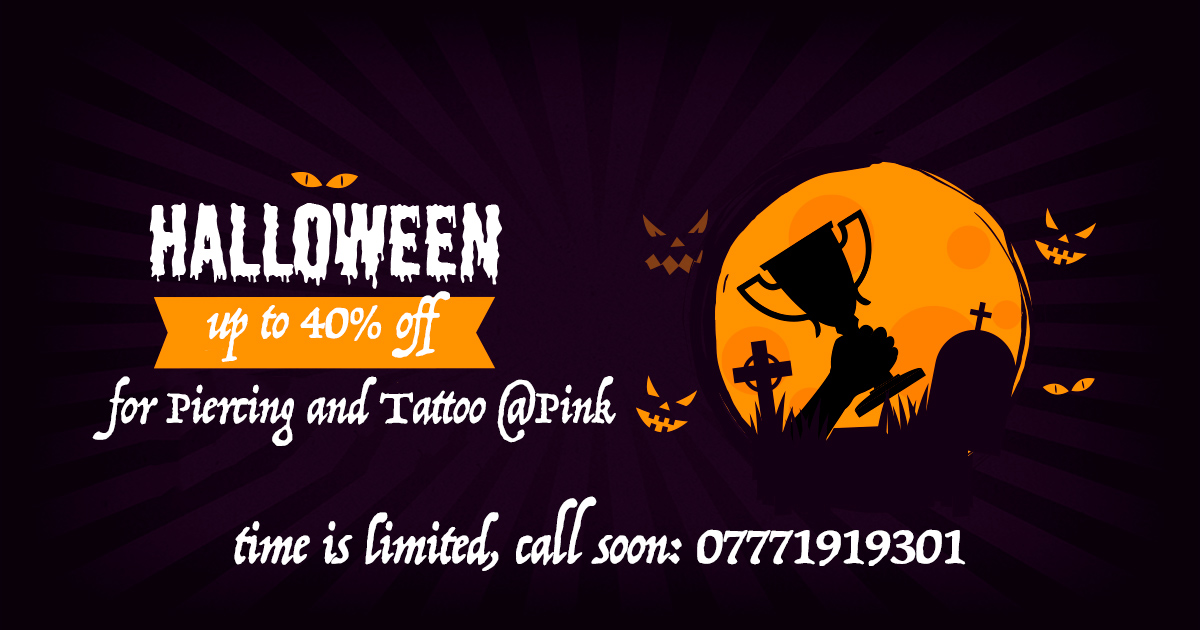The idea of a new, sparkling piece of jewellery adorning your ear is always exciting. In a city as vibrant and expressive as London, personal style is a language spoken on every street corner, and the art of body adornment is its most intimate dialect. You’ve likely spent hours scrolling through Pinterest and Instagram, visualising different placements, and forming a vision of your perfect style. This desire for self-expression is a beautiful thing. But alongside the excitement, a sea of questions and concerns often follows: “Where can I find a truly safe and professional studio for ear piercing London?”, “Is my unique anatomy even right for this piercing?”, “What jewellery should I really be using?”, and of course, “How much is it all going to cost?”.
At PinkTatPier, we live and breathe these stories every day. We believe that a piercing is more than just a procedure; it’s a milestone, a statement, and a collaboration. A few months ago, a client named Tom came into our studio with a vision: he wanted to start a “Curated Ear” project but felt overwhelmed by the options. He showed us images of bold industrial and conch piercings he admired, but as a young professional, he was worried about how they would fit his active lifestyle and corporate job. Our role in that moment wasn’t just to pierce his ear. We held a full, unhurried consultation. We listened to his story, his inspirations, and his concerns. We then assessed his unique anatomy and, together, co-created a more balanced and chic plan that started with a sophisticated helix piercing paired with a subtle stacked lobe. The look of relief, understanding, and pure confidence on his face at the end of that session is precisely why we are so passionate about what we do.
This article is that same comprehensive, reassuring consultation, written for you. It is your definitive guide to starting your ear piercing London journey with confidence, knowledge, and pure excitement.
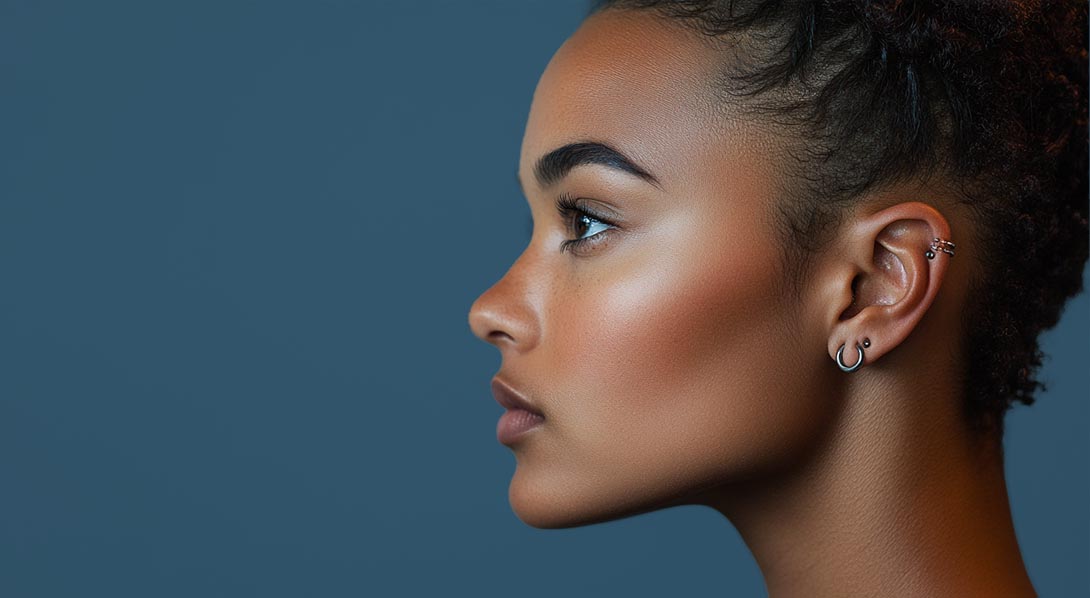
ear piercing
The Evolution of Ear Piercing: From Ancient Ritual to London High Fashion
Ear piercing is no modern phenomenon; it’s an ancient art form with deep roots in cultures and civilisations across the globe. The oldest direct evidence dates back to “Ötzi the Iceman,” a stunningly preserved 5,300-year-old mummy discovered in the Alps, his ears bearing distinct piercings. In ancient Egypt, intricate earrings and large-gauge styles were a clear signifier of wealth and noble status, seen on the sarcophagi of pharaohs like Tutankhamun. Roman soldiers pierced their ears to show allegiance, while sailors across the ages traditionally wore a single gold earring, a macabre insurance policy intended to cover the cost of their Christian burial should they be lost at sea and their body wash ashore.
For centuries, it remained a practice tied to specific social or cultural groups. The explosive shift came in the latter half of the 20th century. Here in London, the punk movement of the 70s and 80s grabbed piercing by the scruff of the neck and thrust it into the mainstream as a symbol of rebellion and anti-establishment defiance. Safety pins and multiple, haphazard piercings became a badge of honour.
Today, the pendulum has swung again. While that spirit of individuality remains, the aesthetic has evolved into one of refined artistry. The modern ear piercing London scene is less about rebellion and more about curation. It’s about fine jewellery, precision placement, and a high-fashion sensibility, where the ear itself is treated as a canvas. At PinkTatPier, we honour both sides of this history: the bold self-expression of punk and the sophisticated artistry of modern fine jewellery.
The Art of the Curated Ear: Designing Your Personal Constellation
The term “Curated Ear” has become a defining trend, elevating piercing from a simple act to a long-term artistic project. It is the most personal and creative approach to ear piercing London has embraced.
What Exactly is a Curated Ear?
A Curated Ear is a bespoke collection of multiple piercings, thoughtfully and strategically placed to complement your unique anatomy, your personal style, and each other. It is the antithesis of random, impulsive piercings. Instead, it’s about creating balance, flow, and a cohesive theme. Think of it as designing a personal constellation on your ear, where each stud, hoop, and chain is a star that contributes to a stunning final picture. This approach considers how different pieces of jewellery will interact, the metals, the gemstones, and the overall aesthetic you wish to achieve.
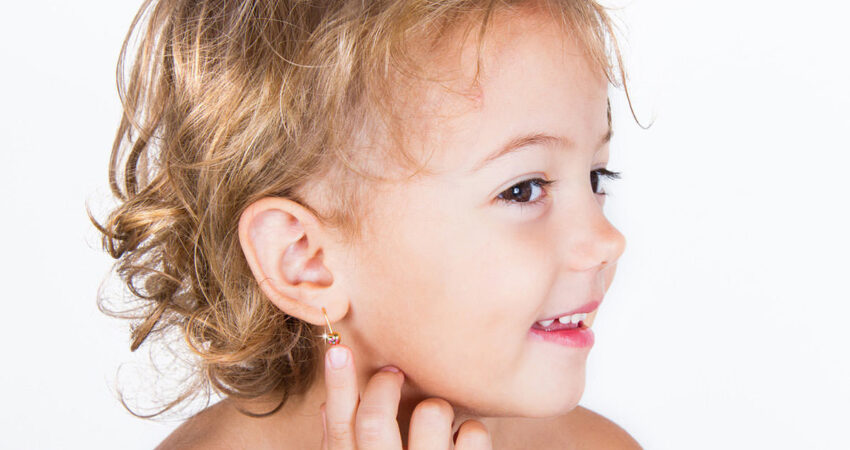
ear piercing
The PinkTatPier Curation Process: A Step-by-Step Journey
Creating a successful Curated Ear is an intimate collaboration between you and your piercing specialist. Our process is designed to be creative, safe, and entirely centred around your vision.
- The Consultation & Styling Session: This is the crucial first step. We sit down with you to discuss your inspiration, your daily lifestyle (do you wear headphones, glasses, or sleep on a particular side?), your aesthetic goals, and your budget. We encourage you to bring photos, but our goal is to create something uniquely yours, not a replica.
- The Anatomical Assessment: Every single ear is different. Our best piercing specialists will carefully examine the unique folds, curves, ridges, and overall shape of your ear. A prominent fold might be perfect for a rook piercing, while a flat helix area might not support an industrial piercing. This anatomical assessment is non-negotiable for ensuring a beautiful result and, more importantly, optimal and safe healing.
- Design, Mapping & Visualisation: This is where the vision starts to become a reality. Using a sterile, single-use surgical marker, we will map out potential placements directly on your ear. This is a dynamic process. We might try a few different configurations, allowing you to see in a mirror exactly how the piercings will be balanced and spaced. It allows you to say “a little higher” or “closer together” until it feels perfectly ‘you’.
- Phased Execution & The Long-Term Plan: A full curation project is a journey, not a race. Your body has a limited capacity to heal multiple wounds at once. To ensure the best outcome, we typically perform no more than two to three piercings per session. We will work with you to create a long-term plan, scheduling future sessions to add new pieces as existing ones heal, gradually bringing your complete vision to life over several months or even years.
A Comprehensive Guide to Ear Piercing Placements
Understanding the landscape of your ear is the first step to designing your dream curation. The table below provides a quick overview of the most common placements for anyone considering ear piercing London.
Table: Popular Ear Piercing Details
| Piercing Name | Description & Style Notes | Pain Level (1-10) | Average Healing Time |
| Lobe | The classic starting point on the fleshy lower part of the ear. Infinitely versatile. | 2 | 6-8 Weeks |
| Helix | Placed on the outer cartilage rim of the upper ear. Perfect for delicate hoops or statement studs. | 5 | 6-12 Months |
| Tragus | Located on the small nub of cartilage that partially covers the ear canal. A chic and subtle choice. | 5-6 | 6-12 Months |
| Conch | Sits in the inner “bowl” of the ear. Ideal for a striking stud or a dramatic orbital hoop after healing. | 6 | 6-12 Months |
| Daith | Placed on the innermost fold of cartilage. Famous for its snug hoop look. | 6-7 | 9-12 Months |
| Rook | Pierces the ridge of cartilage between the inner and outer conch. Best suited for a curved barbell. | 6-7 | 9-12 Months |
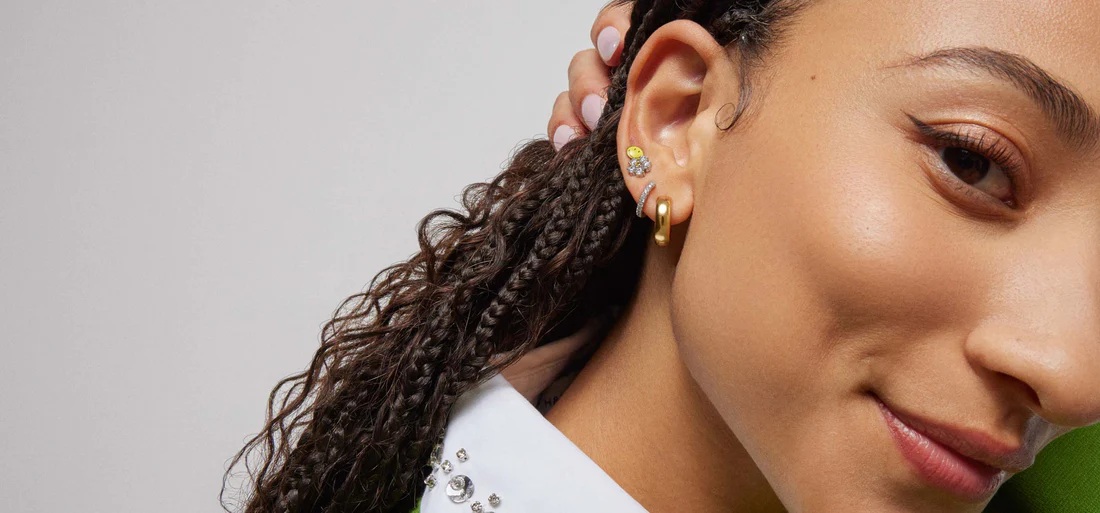
ear piercing
Lobe Piercings: The Foundation
The earlobe, being soft tissue, is the least painful area to pierce and the quickest to heal.
- Standard Lobe: The classic starting point, but far from boring. High-quality jewellery can make a single lobe piercing a statement of elegance. Multiple lobe piercings create a beautiful canvas for a gradient of studs or hoops.
- Stacked Lobe: A more contemporary take where two small piercings are placed very close together, often vertically. This style is perfect for creating depth and playing with tiny, delicate micro-studs.
- Transverse Lobe: A more alternative style where a barbell passes horizontally through the width of the earlobe instead of front-to-back. It’s a unique and edgy take on a classic placement.
Cartilage Piercings: The Framework
These piercings go through the harder, cartilaginous tissue of the ear. They take longer to heal but open up a world of stylistic possibilities that are a core part of modern ear piercing London trends.
- Helix: A piercing placed anywhere on the upper, outer rim of the cartilage. Incredibly popular, it can be adorned with a delicate hoop or a statement stud. Double and triple helix piercings are also a chic option. A “forward helix” is placed on the front rim of the ear, just above the tragus.
- Conch: Placed in the largest, inner “bowl” of the ear. A sparkling stud looks stunning here, acting as a centrepiece. Once fully healed, a large hoop can be worn through the piercing and around the outside of the ear for a dramatic, orbital-like effect.
- Industrial: A single long barbell that connects two separate holes in the upper cartilage, usually a forward-helix and a standard helix. This is a bold, statement piercing that is highly dependent on having the correct ear anatomy to support it safely.
Choosing Your Ideal Jewellery: A Guide to Metals, Styles & Sizes
The quality of your jewellery is just as important as the quality of the piercing itself. This is a non-negotiable aspect of our service. Low-quality materials containing nickel or other alloys can cause severe allergic reactions, irritation, and significant healing complications.
Why Material Matters So Much
- Implant-Grade Titanium (ASTM F-136): This is the gold standard and the only metal we recommend for initial piercings. It is the same material used for medical implants like bone screws and joint replacements. It is completely nickel-free, hypoallergenic, lightweight, and non-corrosive, guaranteeing the safest possible start to your healing journey.
- 14k & 18k Solid Gold: Once your piercing is fully healed, solid gold (never plated or filled) is a beautiful and safe option for an upgrade. We only stock gold from reputable manufacturers that is guaranteed to be nickel-free and cadmium-free.
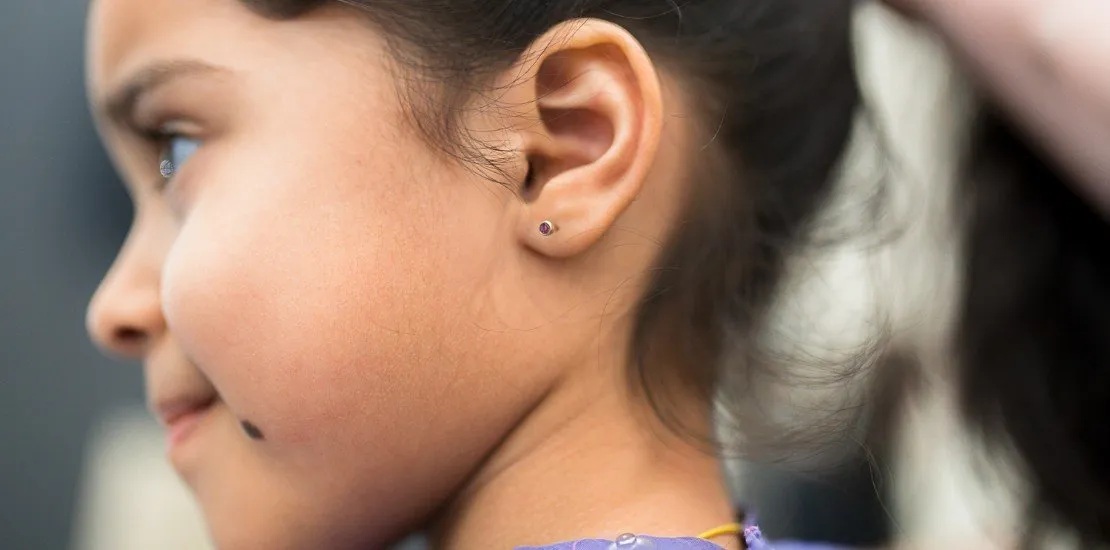
ear piercing
Our Commitment to You: The PinkTatPier Difference
We are not just a piercing studio; we are a collective of dedicated artists committed to your safety, your beauty, and your overall experience.
Expert Insight:
“Every ear is like a fingerprint—entirely unique. The true artistry in piercing isn’t just making a hole; it’s in the design and placement that enhances the natural beauty of a client’s anatomy. It’s a collaboration. A piercing that looks great on Instagram might not be safe or suitable for your ear, and our job is to guide you to a choice that is both beautiful and viable long-term.” – Elena Rahim, Founder of PinkTatPier
- Uncompromising Hygiene is Our Standard: Your safety is our absolute priority. All our reusable instruments are sterilised in a medical-grade autoclave, the same machine used in hospitals and dental surgeries, which kills all microorganisms. All needles are single-use and are opened in front of you. We maintain an aseptic field throughout the procedure.
- Expert Consultation is Our Art: We listen before we pierce. Our consultations are a dedicated time to co-create a plan that excites you and works for you. We will never rush you into a decision.
- Our Specialists are Our Strength: Our team consists of the best piercing specialists for ear piercing London, trained not just in technique but in a deep understanding of human anatomy, aseptic protocols, and artistic design.
Aftercare Essentials: Ensuring a Safe & Swift Healing Journey
A beautiful, healthy piercing is the result of a partnership. We perform the piercing perfectly; you follow the aftercare diligently. Taking these steps seriously is non-negotiable for a healthy outcome.
Your Daily Routine (The Do’s)
- Clean Twice Daily: Gently clean your new piercing morning and night using only a sterile saline wound wash. You can purchase this from our studio or any chemist. Simply spray the front and back of the piercing, wait 30-60 seconds, and then gently pat dry.
- Pat Dry Gently: Use a clean, non-woven gauze pad or a piece of paper towel to gently pat the area dry. Avoid using cloth towels, which can harbour bacteria and snag on your new jewellery.
- Leave It Alone: The golden rule of healing is to leave your piercing alone. Do not touch, twist, or rotate your jewellery. The body is designed to heal; your job is to keep the area clean and avoid irritating it.
Common Mistakes to Avoid (The Don’ts)
- Do not use harsh chemicals: Avoid alcohol, hydrogen peroxide, antibacterial soaps, or any oils and creams. These are far too aggressive and will irritate the delicate healing tissue.
- Do not sleep directly on the piercing: This is the number one cause of irritation bumps and angle changes in cartilage piercings. A travel pillow with a hole in the middle can be a lifesaver.
- Avoid swimming in pools, hot tubs, or open water for at least 4-6 weeks to prevent infection.
- Do not change the jewellery until your piercer confirms it is fully healed. This is crucial.
Transparent Pricing & Online Reservation at PinkTatPier
We believe in complete transparency. You can find a full list of our prices and costs, which are inclusive of our piercing service fee and basic implant-grade titanium jewellery, on our dedicated pricing page. Our convenient online reservation system allows you to see our availability, choose your preferred specialist, and book your appointment for ear piercing London 24/7, without ever needing to make a phone call.
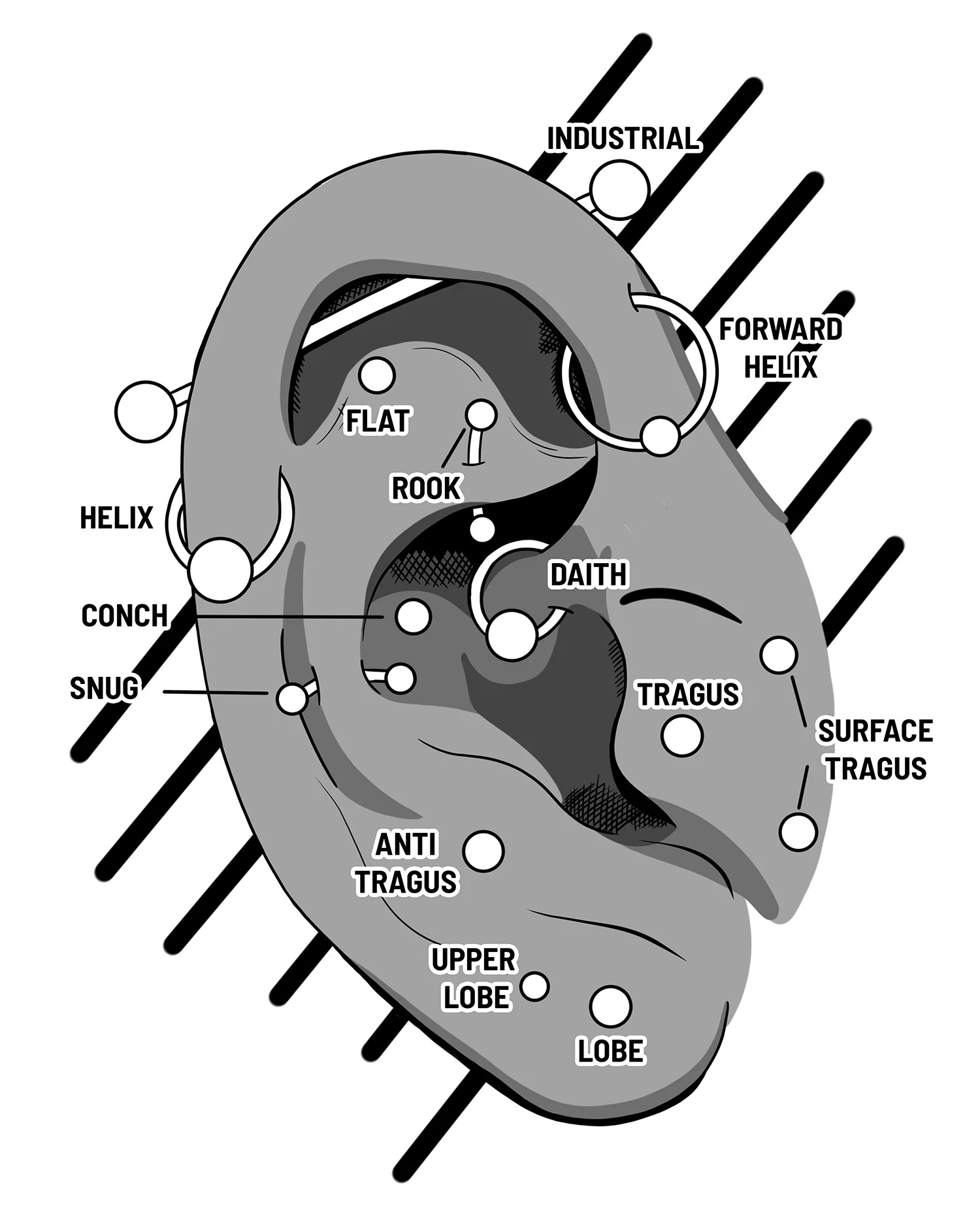
ear piercing
Frequently Asked Questions (FAQ)
1. How old do I need to be to get an ear piercing?
For standard lobe piercings, clients under the age of 16 must be accompanied by a parent or legal guardian with valid photo ID for both. For all cartilage piercings, the minimum age is 16, and a valid photo ID (like a passport or provisional driving licence) is required.
2. Can I change my jewellery as soon as it stops hurting?
No. This is a common and critical mistake. A piercing can feel healed on the outside long before the internal channel of tissue (the fistula) is fully formed and stable. Changing the jewellery too early can cause trauma, introduce bacteria, and set your healing back months. You must wait for the entire healing period recommended by your piercer.
3. How should I prepare for my piercing appointment?
Make sure to have a good meal a few hours beforehand to keep your blood sugar stable. Be well-hydrated. Wear comfortable clothing, and if you have long hair, bring something to tie it back securely. Avoid excessive caffeine or alcohol on the day of your appointment. And most importantly, try to relax! You are in safe, expert hands.
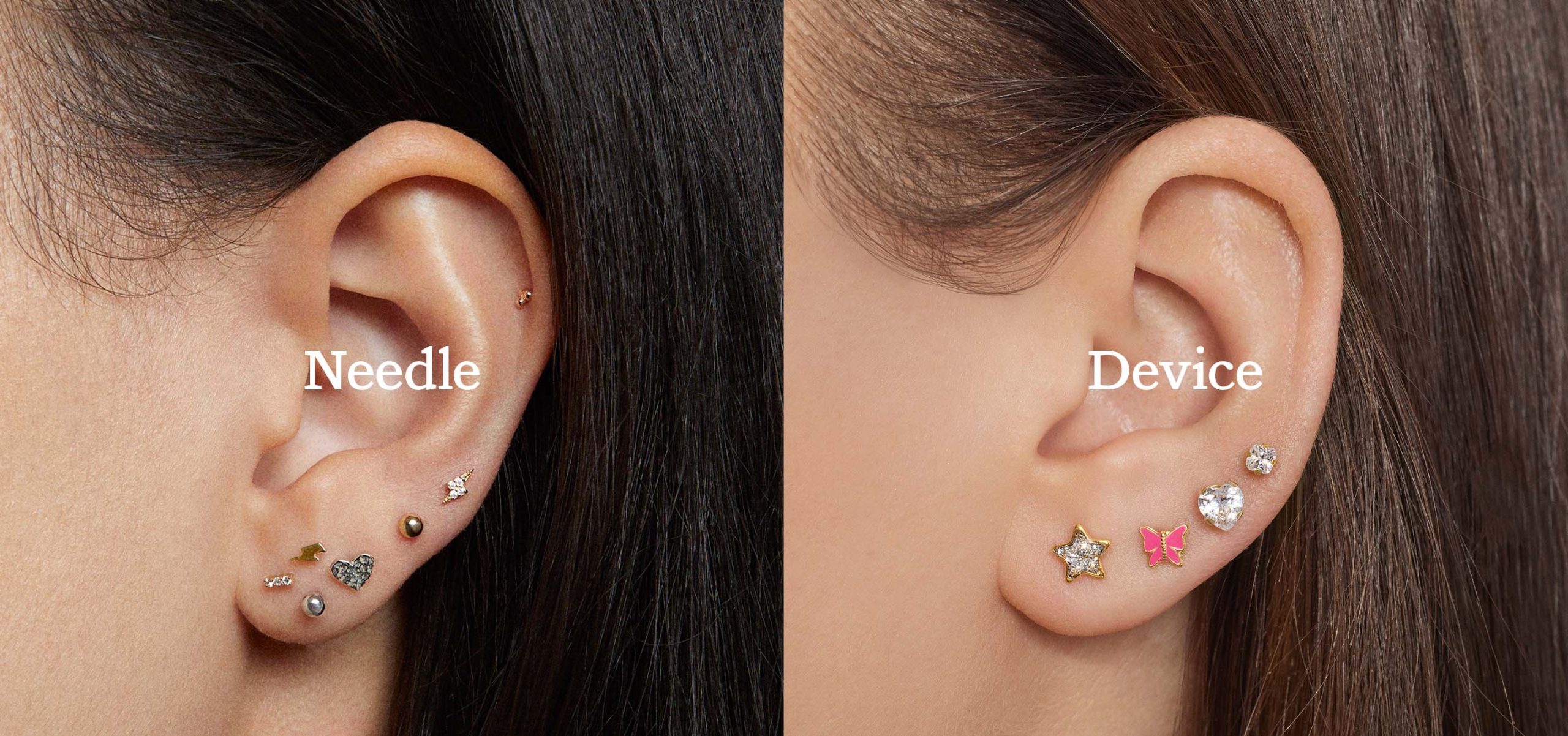
ear piercing
Conclusion: Your Story, Expertly Told
An ear piercing is a beautiful and personal form of self-expression. From a single, classic lobe to an intricately curated ear, each piercing should be a decision made with confidence and excitement. Our guiding principle at PinkTatPier is to provide an experience where artistry, safety, and your personal vision come together seamlessly. We are proud to offer the highest quality and most professional ear piercing London has available.
Your Next Step: Begin Your Piercing Journey
You have the inspiration and the information. Now it’s time to take the first step.
We invite you to book a consultation to discuss your ideas with one of London’s best piercing specialists. Let’s create something beautiful together. You can view our availability and secure your appointment through our online reservation system. For any questions, please visit our Contact Us page.

